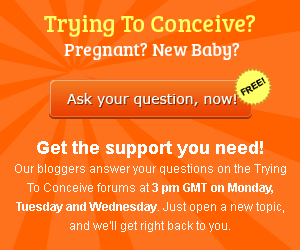Being intimately acquainted with the details of your menstrual cycle can really improve your chances of getting pregnant. Using ovulation test strips is only the start! Read on to find out what the luteal phase of your cycle is all about, and how to calculate the length of your own.
The menstrual cycles phases
Menstruation may seem like a monthly event. In between two periods, youve got a break. The whole menstrual cycle is, in fact, a continuum of events. You count a menstrual cycle from the first day of a period. That day also signifies the start of a new follicular phase. The hormone estrogen dominates this first part of the cycle. The uterine lining builds up, preparing for a possible pregnancy as follicles are also working on developing. Ovulation is the second part of the menstrual cycle. A surge in luteinizing hormone (LH) occurs, followed by the release of an egg. This surge in LH is what ovulation tests measure. The egg remains viable for 24 hours after its release. This is the time at which you can get pregnant.
After ovulation is finished, your luteal phase commences. The luteal phase is the part of your cycle that lasts from the end of your ovulation to the next expected period. In cases where conception occurs, the fertilized egg travels down to the uterus and starts to nestle in its lining. This process takes from seven to 10 days. If no egg was fertilized, or the fertilized egg did not manage to implant, menstruation will start. The average luteal phase lasts 14 days. Some womens luteal phases are longer, while a luteal phase shorter than seven days can pose a real problem. This is called a Luteal Phase Defect (LPD). More about that later.
Detecting ovulation
The key to identifying your luteal phase (and how long it lasts) is to know when you ovulate. Women who are interested in finding out when they are fertile have quite a few different options. Ovulation predictor kits are perhaps the simplest way to find out if you are fertile — every woman is familiar with peeing on a stick, I am sure! An ovulation calendar is a handy tool that calculates the date of your ovulation by using data about your cycles length and the date of your last period. Then, there is fertility charting, a method in which you measure your temperature to figure out when you ovulate.
You can also watch out for your bodys natural ovulation symptoms. Egg-white, stretchy cervical mucus is a great indicator of approaching ovulation. Dont you think you could monitor your own cervical mucus? It is actually a very reliable method, once you familiarize yourself with various types of mucus that appear at different times in the cycle. Some women also have tender breasts, a slight spotting, or ovulation pain.
Knowing when you ovulate has some very obvious benefits for those who are trying to get pregnant, but being aware of the length of your luteal phase also has advantages. For one, you can use an ovulation calendar much more accurately. Additionally, knowing how long your luteal phase lasts means you can watch out for problems with your menstrual cycle more easily.
Luteal Phase Defect
A Luteal Phase defect or LPD is a problem in which the luteal phase of a womans menstrual cycle is too short. Women with a luteal phase defect do not suffer from a lack of ovulation, or another infertility problem, but they are unable to get pregnant. An egg can be fertilized without problems, but the luteal phase is too short to allow it to nestle into the lining of the uterus. Menstruation comes along, and any potential fertilized eggs are flushed out.
There are several possible causes of a luteal phases defect, but insufficient levels of the hormone progesterone (produced by the corpus luteum, a product of ovarian follicles) are usually responsible. You may have a luteal phase defect if the time between ovulation and the next menstruation is less than ten days. Any woman who thinks this applies to her should see her doctor, especially if she has been trying to get pregnant without success for a while.

